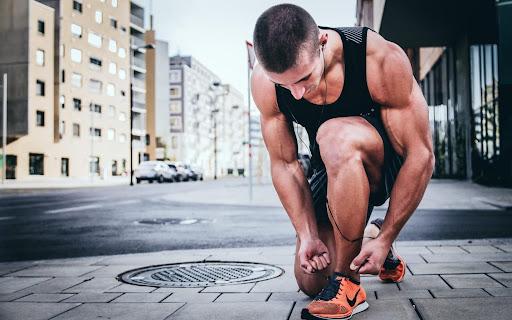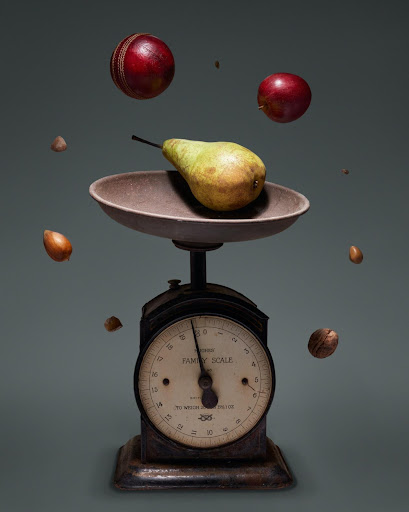

You are trying to achieve your fitness goals and keep reading how important weightlifting is in building muscle, but what about cardio? Does it help or hurt your fitness? The lifting community strongly believes that cardio kills gains. While muscle adaptations are different in strength and aerobic training, there are many misconceptions about cardio. Our article will explain if cardio helps or hurts your fitness and how it works.
Can You Burn Muscles Doing Cardio?
You are trying to follow the right workout regime to build muscles and are concerned if cardio will help burn or build muscle. Most bodybuilders believe cardiovascular exercises burn muscles; that is, doing cardio breaks down contractile proteins that constitute muscles.
However, the gains or losses from cardio depend on how you do the exercise. How you do your cardio can determine if your muscles grow or burn. If you eat correctly and train well, cardio cannot hamper your gains or burn muscle.
Here are some ways cardio can hurt your muscle growth:
Solely Rely on it Instead of Adding Resistance Training
You cannot do cardio exercises solely and expect to build muscle. Lack of resistance training could burn muscles. Do not do a lot of cardio at the expense of weightlifting since it can burn muscles. Instead, combine both cardio and resistance training.
Doing Too Much Cardio
Over-engaging in cardio exercises, especially running, can burn more muscle than it builds. Running increases muscle protein breakdown, making it hard for your body to build muscles. It also causes more fatigue compared to other exercises, thus interfering with your resistance training workout. So, limit your running and schedule weightlifting on a different day from running.
Treating Cardio as a Crash Diet
If you are looking to lose weight and build muscle, you might be desperate for a solution that works fast. Online research could recommend doing a lot of cardio and a crash diet to lose weight. While this may work, you will lose muscle due to calorie restriction, not cardio.
Inadequate Rest/Recover Time
Even if you do cardio, lift weights, and watch your diet, it will be hard to reach your muscle goal without adequate time to rest. Your body needs time to recover, and over-exercising without setting aside time to recover can stall or undo your progress.
How To Correctly Combine Cardio with Strength Training for Muscle Gain

Cardio doesn’t burn muscle. Doing it incorrectly does. Incorrectly combining cardio and resistance training slows muscle growth and dampens the anabolic effects of resistance training. Here is how you can combine cardio with strength training to gain muscle:
- Prioritize low-impact cardio like cycling and rowing instead of high-impact cardio like running
- Have a separate workout schedule for cardio and resistance training
- Limit the duration and volume of cardio workouts to 45 minutes per workout
Can You Do Cardio And Still Grow Muscles?
Yes, you can. Cardio is an essential component of a well-rounded fitness program. Unfortunately, it is dreaded due to fear of muscle loss. However, there are numerous cardio exercises you can do to build muscle and burn fat. However, you don’t need to overdo them; you need to couple them up with resistance training and add enough rest time.
There are three cardio exercises you can try:
Walking Lunges
Lunges blend cardio and strength training. They help burn fat and increase metabolism. Walking lunges engage the core, increase flexibility, stretch hip flexors, and alleviate lower back pain. They fire up the leg muscles and activate the posterior chain, which is often neglected.
Loaded Carries
Doing loaded carriers helps increase your overall strength. Pick up something heavy, and carry it overhead, in front of you or your sides, depending on which you find comfortable. You can carry dumbbells, barbells, or medicine balls. Carriers strengthen your biceps, upper back, obliques, forearms, and abs.
Sled Drags
You can use a sled as a tool to cut fat and pile on muscles. There are different sizes and shapes of sleds, so you can choose one to drag, pull or push depending on your goal for the day. Push the sled forward if you want to work your hamstrings and glutes. To work your quads, pull the sled backward. Sled training needs minimal recovery since there isn’t eccentric loading.
Should I Do Cardio While Bulking
Bulking is when a body lifter consumes a calorie surplus to maximize weight gain and reduce body fat. You can choose to do cardio while bulking. While it is not mandatory, it is suitable for five reasons.
First, cardio, when bulking, can help you recover fast. Thus, improving your gains over time. Second, cardio offers numerous health benefits you cannot get solely by weightlifting. These benefits include better circulation, decreased blood pressure, and cholesterol.
Third, cardio is fun, and if you enjoy engaging in cardiovascular workouts, there is no reason to avoid it. However, follow the right way to exercise to ensure you don’t overdo cardio or undo your progress. Fourth, when bulking, cardio makes it easy for you to get lean again. Lastly, cardio increases your body’s ability to burn fat, thus, making it easy to lose fat if you need to cut.
What Cardio Should I Do When Bulking?
If you want to engage in cardio sessions when bulking, try to do minimal cardio. Remember, when bulking, you want to be in a calorie surplus so that you train hard and get adequate time to recover and build muscle mass. Doing cardio will burn calories and thus increase your calorie demands. So, you will need to eat more as you burn more. Engage in minimal cardio like light walks and bike rides at a leisure pace. Aim to do cardio to enjoy the experience, not to burn calories.
If you are doing cardio to achieve better health, you can engage in low-intensity bouts of about 15 to 30 minutes. Do the exercises at a low intensity for maximum benefit for your circulation system, blood pressure, and heart health. However, remember to increase your calorie needs depending on how many calories you burn.
Engaging in high-intensity exercises can work against your bulking goals. So, if you prefer high-intensity cardio, keep it to a minimum to avoid excessively increasing your calorie demands. Besides increasing calorie demands, high-intensity cardio increases fatigue and limits your ability to train with weights.
How Much Cardio Is Too Much
Cardio is essential to your health and offers numerous benefits if you regularly add it to your exercise regime. While you might need the health benefits cardio offers, engaging in too much cardio could lead to negative effects. But how much cardio is too much?
According to the second edition of the Physical Fitness Guidelines, an American adult can benefit from 150-300 minutes of moderate-intensity physical activity and 75 minutes of high-intensity exercise weekly. Anything more than that could be too much cardio.
There are also some signs which indicate you are engaging in too much cardio like:
Your Easy Days Are Starting to Feel Hard
Did you previously have easy days doing cardio, and now the easy days are feeling hard? While it is normal to have an off-training day where you would rather sleep, you might be overtraining when your bad days become more than the good. You need to allow your body to rest and recover from your sessions.
Sore Muscles
A common fitness myth is that being sore shows that you are putting in the work. However, being sore means you are experiencing delayed onset muscle soreness on muscles you haven’t exercised in a while. It also shows you are putting your body under stress or are working with a heavier load. Your soreness should ease as you become accustomed to your workout. So, while feeling sore and experiencing muscle fatigue is normal, if you are constantly feeling sore after a workout, it could be because you are doing too much.
You are Losing More Muscle than Fat
Doing too much cardio can result in losing muscle instead of fat. If your fitness regime constitutes an overload of cardio, you need to fuel your body, or it will break down the muscle tissues and use them as a source of fuel. When you lose muscle, your resting metabolism drops, and your body will burn more muscle.
Difficulty Sleeping
Exercising should relax your body and help you sleep better at night. However, if you do too much cardio, you will get the opposite effect, and your sleep pattern will be negatively affected. A cardiovascular workout increases your core temperature and heart rate and releases feel-good hormones-endorphins. However, when you over-exercise, your body becomes stressed and releases cortisol, making it hard to sleep at night.
Your Sick Days are Alarmingly Increasing
When you engage in too much cardio, the stress hormone cortisol will become released frequently in your body. Cortisol suppresses the immune system, weakening it and making you prone to sickness.
Take Away
The relationship between cardio training and muscle loss remains confusing to most. The main challenge is finding the right balance of cardio and strength training to achieve your bodybuilding goals. Ensure you train adequately and set aside days for cardio and weight training. Remember to have a sufficient recovery period to encourage muscle growth.
Cardio training offers numerous health benefits that strength training alone doesn’t. So, add a cardio workout to your strength training routine, but in the right amount to help build muscle. Try adding our recommended cardio workouts that help build muscle to achieve your goals faster























You must be logged in to post a comment Login